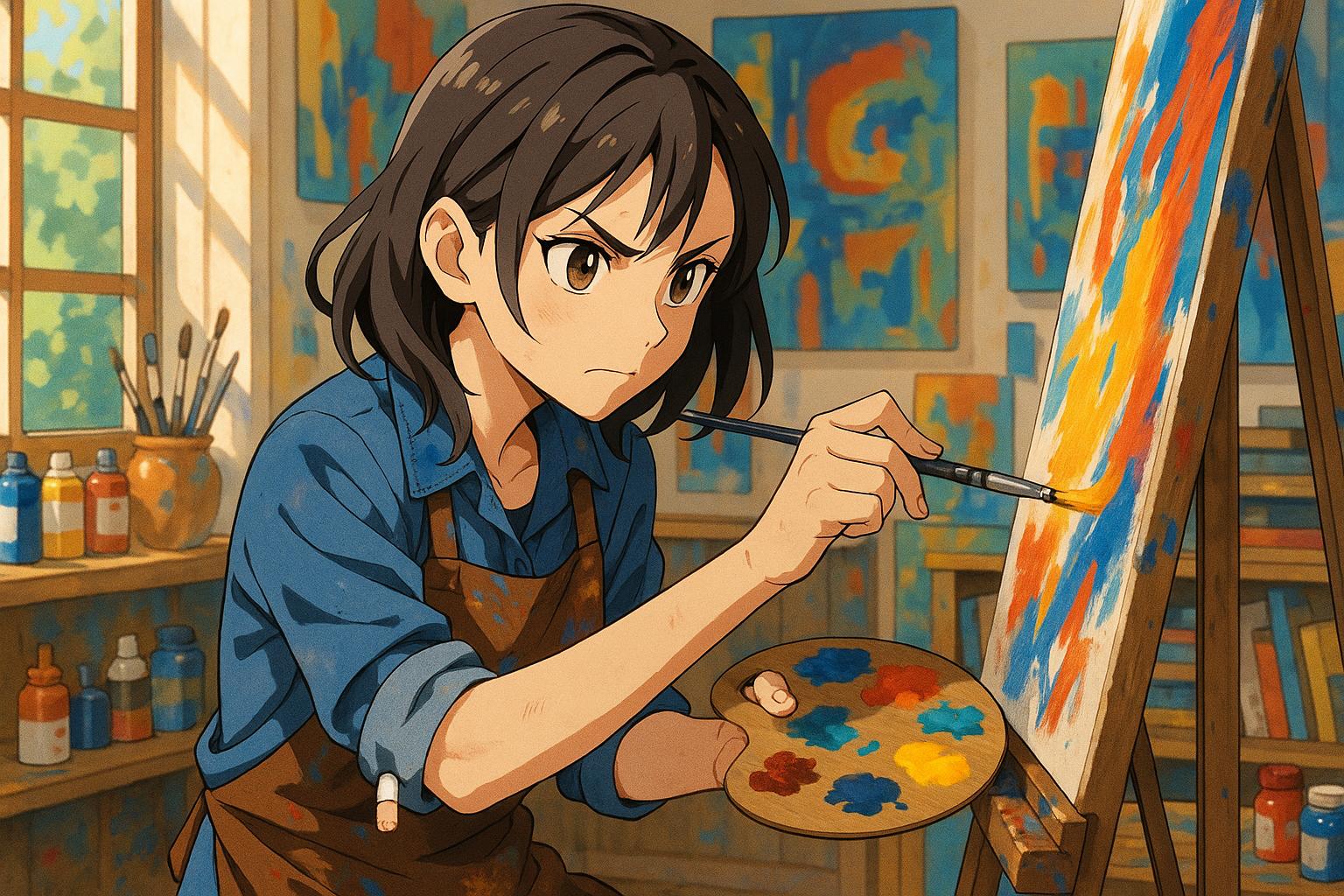Maggi Hambling's artistic journey took an unexpected turn following a serious accident that resulted in the amputation of her right little finger. On November 17, while descending the stairs with a glass in hand, Hambling fell, leading to a severe injury that left her hand bloodied and in distress. Remarkably, she delayed seeking medical attention, fearing the local hospital would be overcrowded on a Saturday night. It was not until her condition worsened that she underwent surgery to remove the finger, a loss that could have devastated many artists. Yet, Hambling’s resilience shines through. She has adapted her practice to incorporate her non-dominant left hand, demonstrating a remarkable commitment to her art.
Hambling recounted, “I just sat at the bottom of the stairs with blood everywhere,” illustrating both the physical injury and emotional turmoil faced during that ordeal. “But it just went black and began to stink,” she added, articulating the point at which her situation became dire. After the surgery, she returned to her studio almost immediately, proving that her determination to create outweighs the challenges posed by her injury. In her characteristic wry humour, she noted her therapist’s comment about the heightened difficulty of hand injuries for artists, quipping about the amusing interactions that ensued with her plumber and friends.
Her ability to adapt follows a wider narrative in the realm of artistic creation. Many artists find their hands not merely tools of their trade but extensions of their identities, with the brain’s intricate connections reflecting the dexterity and skill required to execute their vision. Hambling's experience resonates with the stories of others in similar situations, including incidents highlighted in reports of workplace injuries that have resulted in life-altering consequences. A recent case involved a sheet metal manufacturer in Carlisle that faced fines after an employee's hand became trapped in machinery, emphasizing the necessity for robust safety standards to prevent such occurrences.
Moreover, advancements in prosthetic technology are shaping the future for those who experience amputations. New designs for prosthetic fingers are emerging, offering improved functionality and comfort, and enabling users to return to daily tasks that were previously hindered by their injuries. This innovation reflects a growing understanding of the psychological and physical needs of amputees, showing that quality of life can be substantially enhanced.
The implications of hand injuries extend beyond individual experiences, highlighting broader public health concerns. Research has indicated a need for better management of wounds to prevent amputations, especially in vulnerable populations. For instance, a study presented at a recent medical congress suggested that effective wound management systems risk reducing amputation rates among diabetic patients. This underscores the importance of a proactive approach in healthcare to prevent severe outcomes from injuries that might otherwise seem manageable.
In a world where artistic success often comes with the pressure to conform to societal expectations, Hambling candidly remarked on the industry’s challenges. At the Charleston Festival, she and fellow artist Sarah Lucas reflected on the competitive nature of the art scene, which they described as “a stinking, bitchy world.” Yet, despite the hurdles, their passion for creativity shines through, reminding us that art has the power to transcend personal adversity.
As Hambling continues to evolve her practice in the wake of her loss, her story stands as a testament to resilience and adaptability. Through her continued commitment to artistry, she embodies the idea that creativity often flourishes in the face of life’s unexpected challenges.
Reference Map
- Paragraph 1: [1], [2]
- Paragraph 2: [1]
- Paragraph 3: [3]
- Paragraph 4: [4]
- Paragraph 5: [5], [6]
- Paragraph 6: [7]
- Paragraph 7: [1], [2]
Source: Noah Wire Services
